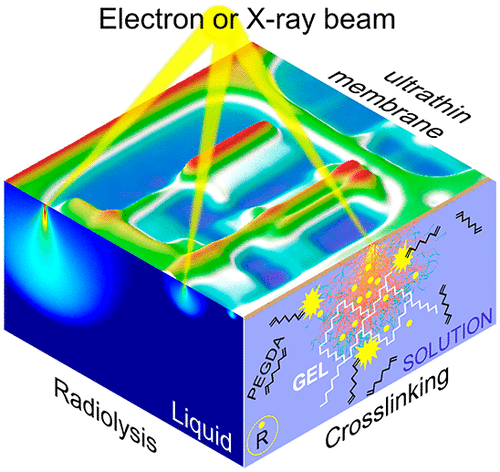(NIST Scientists Get Soft on 3D Printing)
2020/9/22 アメリカ合衆国・国立標準技術研究所(NIST)

・ NIST が、電子ビームと X 線ビームを使用した新しい 3D ゲルプリンティング技術を開発。ナノスケールの精度で複雑な構造の作製が可能となる。
・ 標準的な 3D プリンターは、プラスチックやゴム等のプリント材料をラザニアのように層状に重ね上げて硬いオブジェクトを作製する。3D ゲルプリンターでは、プリンターチャンバ中の高分子溶液に UV 光や可視レーザー光を照射して硬化させ、ソフトなゲル製のオブジェクトを作製する。
・ 新 3D ゲルプリンティング技術では、UV 光や可視光よりもエネルギーが高く(=波長がより短い)、より強力に集束する電子・X 線のビームを使用し、極微細なゲル構造を作製。ゲルの造形に特殊な分子セットも不要となる。
・ ただし、これらの光線が有効な真空では、各チャンバの溶液が蒸発してゲルの造形が不可能に。これを解決するため、真空チャンバと溶液チャンバの間に、溶液の蒸発を防止しながら電子・X 線ビームの溶液への透過を促す窒化シリコンの極薄いシートを配置した。
・ 同プリンティング技術では、最小で 100nm の微細なゲル構造を作製できる。さらに改良することで、小型のウィルスサイズの 50nm の達成を目指す。
・ 同 3D ゲルプリンティング技術は、脳の活動をモニタリングするフレキシブルな埋め込み式電極、ウィルスを検出するバイオセンサー、ソフトなマイクロロボットや、生体細胞の模倣やそれらとのインタラクションができたり、成長を促す媒介物を供給したりする構造等、組織工学や医療・バイオ分野でのアプリケーションが期待できる。
URL: https://www.nist.gov/news-events/news/2020/09/nist-scientists-get-soft-3d-printing
<NEDO海外技術情報より>
(関連情報)
ACS Nano 掲載論文(アブストラクトのみ:全文は有料)
Electron and X-ray Focused Beam-Induced Cross-Linking in Liquids: Toward Rapid Continuous 3D
Nanoprinting and Interfacing using Soft Materials
URL: https://pubs.acs.org/doi/10.1021/acsnano.0c04266
Abstract
Multiphoton polymer cross-linking evolves as the core process behind high-resolution additive microfabrication with soft materials for implantable/wearable electronics, tissue engineering, microrobotics, biosensing, drug delivery, etc. Electrons and soft X-rays, in principle, can offer even higher resolution and printing rates. However, these powerful lithographic tools are difficult to apply to vacuum incompatible liquid precursor solutions used in continuous additive fabrication. In this work, using biocompatible hydrogel as a model soft material, we demonstrate high-resolution in-liquid polymer cross-linking using scanning electron and X-ray microscopes. The approach augments the existing solid-state electron/X-ray lithography and beam-induced deposition techniques with a wider class of possible chemical reactions, precursors, and functionalities. We discuss the focused beam cross-linking mechanism, the factors affecting the ultimate feature size, and layer-by-layer printing possibilities. The potential of this technology is demonstrated on a few practically important applications such as in-liquid encapsulation of nanoparticles for plasmonic sensing and interfacing of viable cells with hydrogel electrodes.



